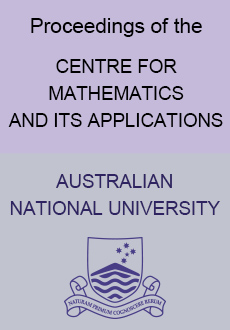Abstract
Growing out of the initial connections between subfactors and knot theory that gave rise to the Jones polynomial, Jones’ axiomatization of the standard invariant of an extremal finite index II$_1$ subfactor as a spherical C$^∗$-planar algebra, presented in [16], is the most elegant and powerful description available. We make the natural extension of this axiomatization to the case of finite index subfactors of arbitrary type. We also provide the first steps toward a limited planar structure in the infinite index case. The central role of rotations, which provide the main non-trivial part of the planar structure, is a recurring theme throughout this work.
In the finite index case the axioms of a C$^∗$-planar algebra need to be weakened to disallow rotation of internal discs, giving rise to the notion of a rigid C$^∗$-planar algebra. We show that the standard invariant of any finite index subfactor has a rigid C$^∗$-planar algebra structure. We then show that rotations can be re-introduced with associated correction terms entirely controlled by the Radon-Nikodym derivative of the two canonical states on the first relative commutant, $N′ \cap M$.
By deforming a rigid C$^∗$-planar algebra to obtain a spherical C$^∗$-planar algebra and lifting the inverse construction to the subfactor level we show that any rigid C$^∗$-planar algebra arises as the standard invariant of a finite index II$_1$ subfactor equipped with a conditional expectation, which in general is not trace preserving. Jones’ results thus extend completely to the general finite index case. We conclude by applying our machinery to the II$_1$ case, shedding new light on the rotations studied by Huang [11] and touching briefly on the work of Popa [29].
In the case of infinite index subfactors there are obstructions to having a full planar algebra theory. We constructing a periodic rotation operator on the L$^2$-spaces of the standard invariant of an approximately extremal, infinite index II$_1$ subfactor. In the finite index case we recover the usual rotation. We also show that the assumption of approximate extremality is necessary and sufficient for rotations to exist on these L$^2$-spaces.
The potential complexity of the standard invariant of an infinite index subfactor is illustrated by the construction of a II$_1$ subfactor with a type III central summand in the second relative commutant, $N′ \cap M_1$. The restriction to L$^2$-spaces does not see this part of the standard invariant and Izumi, Longo and Popa’s [13] examples of subfactors that are not approximately extremal provide a further challenge to move beyond the L$^2$-spaces in the construction of rotation operators. The present construction is simply an initial step on the road to a planar structure on the standard invariant of an infinite index subfactor.
Information


